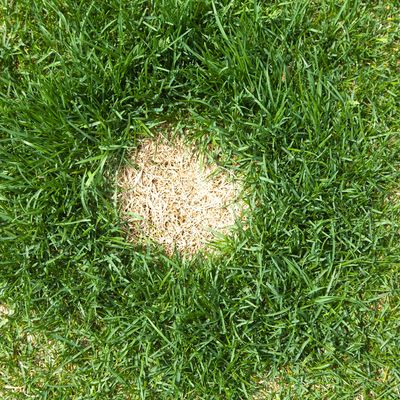
It’s not easy being a hairstylist. Not only do they have to navigate delicate matters of length with extremely particular clients (“Can you go, like, a third of a centimeter shorter?”), but sometimes they must also be the bearer of bad news, like informing someone that they have a small bald spot on the back of their head. Good luck with that.
Since bald spots don’t itch or hurt, people often don’t realize they have one (or two) until someone else points it out, says Paradi Mirmirani, M.D., an associate clinical professor of dermatology at the University of California at San Francisco who specializes in hair disorders. And then they may not be in the privacy of their own bathroom where they can yell and cry. The culprit is alopecia areata, an immune condition that leads to coin-size bare patches. It can happen anywhere you have hair — your scalp, eyebrows, facial hair, pubic hair.
Some people who come to Dr. Mirmirani with this sudden, patchy hair loss are concerned they might have a bigger health problem, but most are terrified that they’re going to get more spots or go completely bald. She says that while this is a relatively common condition, affecting about 2 percent of people at some point in their lifetime, its course can be unpredictable: Some will have one episode and never see a bald spot again, while others will have recurring problems and might lose more hair.
But the good news is that the hair will grow back eventually. “Your body’s defense mechanism is attacking the hair follicle, preventing it from growing, but it doesn’t destroy the hair follicle. There’s always regrowth. That’s the one sure fact I can give them,” Dr. Mirmirani says, who’s also a dermatologist with the Kaiser Permanente Medical Group in Vallejo, California.
It’s nice to know you probably won’t go bald, but most people understandably want to know their odds for further problems. She says that one to 2 percent of people with alopecia areata get alopecia totalis (loss of hair on the scalp) or alopecia universalis (loss of all hair on the body), but people shouldn’t worry about those numbers because it’s out of their control. “I tell my patients I have a bit of a Zen approach. We deal with what you have today, which is one spot that’s easily covered, that’s easily treated. We can’t worry about the what-ifs because they’re impossible to predict,” she says.
The causes are unclear as well. Dr. Mirmirani says there may be a genetic component to alopecia areata but there’s no one common trigger, and contrary to popular belief, it’s not the result of stress. If you have it, know that you didn’t “bring it on yourself.”
Dermatologists can treat alopecia areata with cortisone injections that act as an anti-inflammatory, decreasing the immune attack on the hair follicles — but that won’t change the course of the condition, it just gets you some regrowth a little faster, she says. You have to get the injections every six to eight weeks until all of the hair in the bald spot starts regrowing, which might happen around the same time as if you’d done nothing.
“Let’s say you had two patches and you decide not to do anything because you can cover them up easily. In six months, the hair regrows — that’s a typical scenario,” she says. “If you do cortisone injections, you get some hair regrowing around two months. Then you’d have to keep doing the injections and at six months it looks like there’s full regrowth so we can stop.” For that reason, she says getting no treatment is a valid option, but not everyone is quite that Zen. “Most people want to do something. The idea of sitting around with a bare patch is not appealing.” For people who hate shots, there are also topical cortisone cocktails but Dr. Mirmirani doesn’t think they’re as effective. Womp.
People with alopecia areata will notice the spot(s) all of a sudden even though the hair didn’t fall out in a big chunk. But what about that crazy thing that happens when new moms start seeing huge clumps in the shower drain? That kind of hair loss can be especially confusing because it isn’t necessarily accompanied by bald spots. Dr. Mirmirani says this excessive shedding postpartum, called telogen effluvium, is totally normal and thankfully temporary. Pregnancy disrupts your hair-growth cycle, and a few months after giving birth you start a new “crop” of hair. This leads to a big shed, but your hair will fill in, she says.
Even though this kind of hair loss is nothing to worry about, it’s hard not to be concerned. “I talk about this all the time and when I had my telogen effluvium it still freaked me out,” she says. “I’m like, ‘Well, that’s a lot.’” Doctors: They’re just like us!




